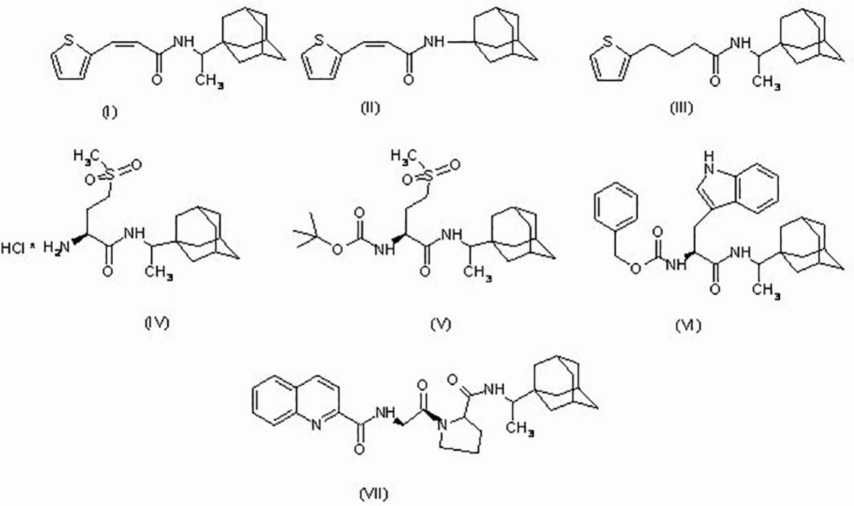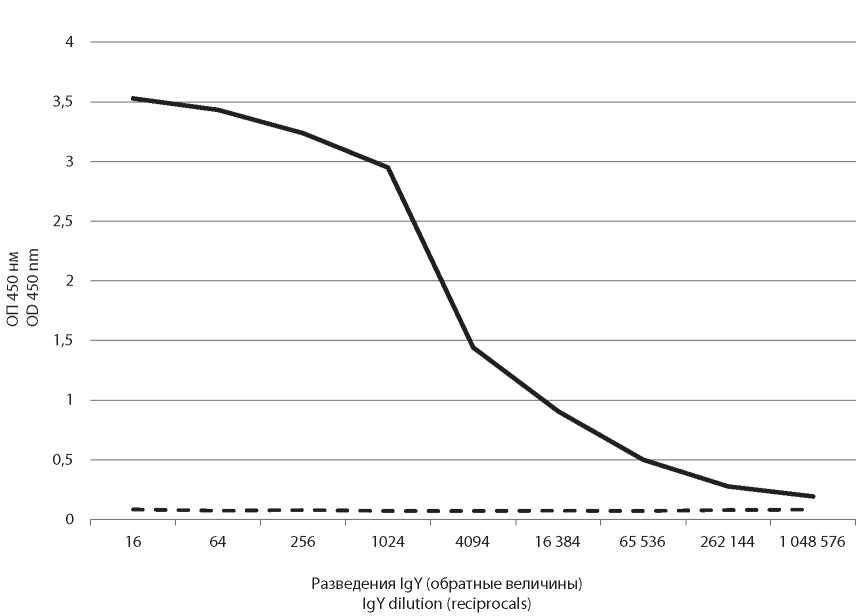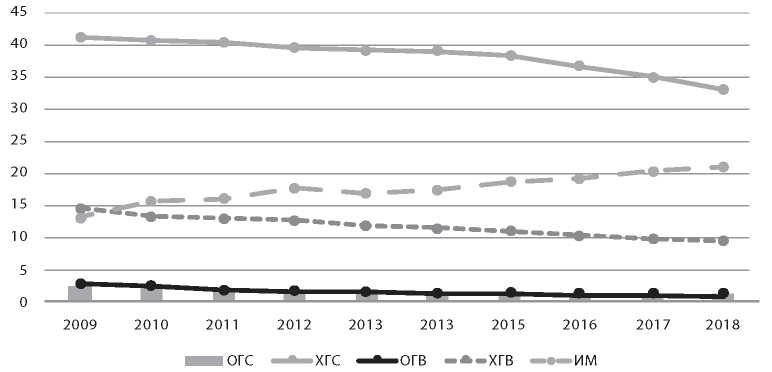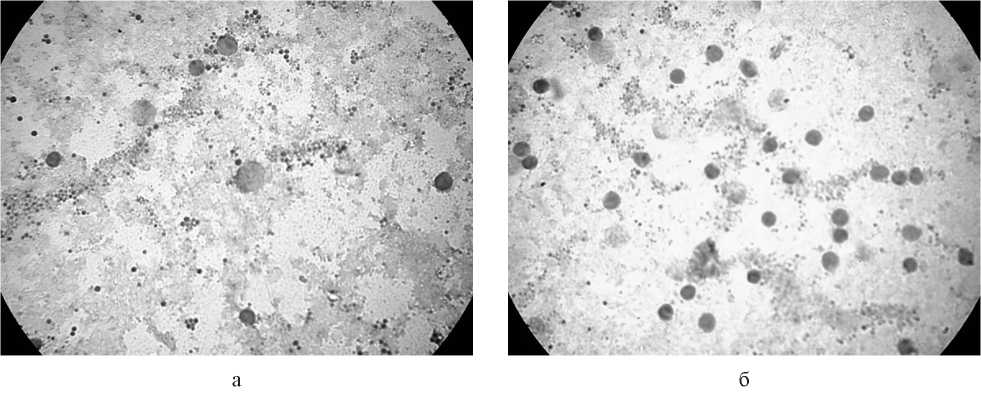Vol 65, No 1 (2020)
- Year: 2020
- Published: 20.02.2020
- Articles: 7
- URL: https://virusjour.crie.ru/jour/issue/view/32
- DOI: https://doi.org/10.36233/0507-4088-2020-65-1
Full Issue
REVIEWS
Etiology of epidemic outbreaks COVID-19 in Wuhan, Hubei province, Chinese People Republic associated with 2019-nCoV (Nidovirales, Coronaviridae, Coronavirinae, Betacoronavirus, Subgenus Sarbecovirus): lessons of SARS-CoV outbreak
Abstract
Results of analysis of phylogenetic, virological, epidemiological, ecological, clinical data of COVID-19 outbreaks in Wuhan, China (PRC) in comparison with SARS-2002 and MERS-2012 outbreaks allow to conclude:
– the etiological agent of COVID-19 is coronavirus (2019-CoV), phylogenetically close to the SARS-CoV, isolated from human, and SARS-related viruses isolated from bats (SARS-related bat CoV viruses). These viruses belong to the Sarbecovirus subgenus, Betacoronavirus genus, Orthocoronavirinae subfamily, Coronaviridae family (Cornidovirinea: Nidovirales). COVID-19 is a variant of SARS-2002 and is different from MERS-2012 outbreak, which were caused by coronavirus belonged to the subgenus Merbecovirus of the same genus;
– according to the results of phylogenetic analysis of 35 different betacoronaviruses, isolated from human and from wild animals in 2002-2019, the natural source of COVID-19 and SARS-CoV (2002) is bats of Rhinolophus genus (Rhinolophidae) and, probably, some species of other genera. An additional reservoir of the virus could be an intermediate animal species (snakes, civet, hedgehogs, badgers, etc.) that are infected by eating of infected bats. SARS-like coronaviruses circulated in bats in the interepidemic period (2003-2019);
– seasonal coronaviruses (subgenus Duvinacovirus, Alphacoronavirus) are currently circulating (November 2019
– January 2020) in the European part of Russia, Urals, Siberia and the Far East of Russia, along with the influenza viruses A(H1N1)pdm09, A(H3N2), and В, as well as six other respiratory viruses (HPIV, HAdV, HRSV, HRV, HBoV, and HMPV)
 6-15
6-15


ORIGINAL RESEARCHES
Adamantan derivatives capable of inhibiting the reproduction of a Rimantadine resistant strain of influenza A(H1N1)pdm09 virus (Influenza A virus, Alphainfluenzavirus, Orthomyxoviridae)
Abstract
Introduction. Adamantanthane-type drugs such as rimantadine and amantadine have long been used to treat diseases caused by influenza A virus. However, as a result of the mutations, influenza viruses have become resistant to aminoadamantans. The target for these drugs was the protein channel M2. Influenza A virus M2 viroporin in the protein shell forms fairly specific ion channels with a diameter of about 11 Å, specializing in transporting protons inside the viral particle (virion). Restoration of the antiviral properties of adamantanthane-type drugs consists in the selection of advanced functional groups bound by the carbocycle to find new sites of binding to the protein target M2.
The рurpose of the study is to identify the antiviral properties of new adamantanum derivatives to the pandemic strain of influenza A virus in vitro.
Material and methods. Compounds of aminoadamantans with amino acids and other organic molecules were obtained by classical peptide synthesis methods. The structure of the compound was tested by means of physical and chemical methods. Antiviral properties of synthetic compounds were studied in vitro on monolayer MDCK cells infected with pandemic strain of influenza A/California/07/2009 virus in two schemes of administration of investigated compounds and virus.
Results. The reference strain of the influenza virus A/California/07/2009(H1N1) was sensitive to the compounds under test in varying degrees. The antiviral activity of the compounds was expressed in a 50% inhibitory concentration (IС50) ranging from 0.5 to 2.5 мкM, which is generally a good indicator for the Rimantadine/Amantadine resistant strain.
Discussion. The values of the IС50 for compounds introduced two hours before contact with the virus were slightly higher than those for single-moment introduction of the substance and virus. The effect of increasing the inhibitory concentration in the prophylactic scheme of compounds was valid for all compounds of the experiment.
Conclusion. The presented synthetic compounds are active against the variant of influenza A virus resistant to Rimantadine and Amantadine preparations. The obtained compounds can be used as model structures for creation of a new drug of direct action against advanced strains of influenza A virus.
 16-20
16-20


Experience of application of IgY-technology for laboratory diagnostics of viral infections
Abstract
Introduction. The well-known advantages of class Y antibodies (IgY) from egg yolks of immunized hens in comparison with class G antibodies (IgG) of laboratory animals traditionally used in laboratory diagnosis of infectious diseases determine the stable interest of researchers in using IgY for these purposes (IgY technology) . Over the past 20 years, the obvious benefits of IgY technology have been demonstrated for a number of viral and bacterial infections. Goals and objectives. Construction of ELISA systems based on specific IgY for laboratory diagnosis of infections caused by tick-borne encephalitis virus, yellow fever virus, poliovirus.
Material and methods. Obtaining yolk preparations of immunized chickens, obtaining highly purified IgY preparations (salting out, affinity chromatography), constructing ELISA systems for determining virus-specific antigens, testing the parameters of ELISA systems.
Results and discussion. For the first time in laboratory practice, ELISA systems based on the use of specific polyclonal IgY were designed for laboratory diagnosis of topical human viral infections caused by flaviviruses and enteroviruses: determination of antigens of tick-borne encephalitis virus, yellow fever virus, 3 types of poliovirus. It was experimentally shown that these ELISA systems have high sensitivity and specificity, which allows them to be used for the semiquantitative and quantitative determination of antigens of these viruses in various materials (infected cell cultures, vaccines, etc.).
Conclusion. The ELISA systems developed on the basis of specific IgY for determination of viral antigens can be effectively used for laboratory diagnosis of a number of viral infections, for the validation and control of vaccine preparations.
 21-26
21-26


Viral hepatitis B, C and infectious mononucleosis: epidemiological similarities and differences
Abstract
Introduction. The presence of etiologically unencrypted diagnoses in the structure of viral hepatitis determines the relevance of searching for other pathogens involved in liver pathology formation. The role of Epstein-Barr virus in the development of hepatitis was described in the scientific literature, but official statistics do not allow to assess its contribution to liver damage along with hepatitis B and C viruses.
The purpose – to identify common and distinctive epidemiological features of viral hepatitis B (HB), C (HC) and infectious mononucleosis (IM).
Material and methods. A retrospective epidemiological analysis of these nosologies incidence was carried out according to official statistics in 2009-2018 in the Russian Federation.
Results and discussion. The multidirectional trends in the long-term dynamics of the incidence of IM, acute and chronic HB and HC and the presence of strong direct correlation between the acute and chronic HB and HC incidence were established. Distinctive features include disparity in epidemic process intensity in different age groups (prevalence of morbidity in children aged 1–2 and 3–6 years with IM and persons older than 18 years – with viral hepatitis). It is common for IM and HB and HC to involve the majority of urban population in the epidemic process, as well as children under the age of 1 year. The described differences are due to the action of transmission mechanisms specific to each infection.
Conclusion. The results obtained in this study may serve as a basis for further study of the interaction of EpsteinBarr virus with hepatitis B and C viruses.
 27-34
27-34


Characterization of B1-cells during experimental leukomogenesis
Abstract
Background. Bovine leukemia causes a significant polyclonal expansion of CD5+ , IgM+ B lymphocytes, known as persistent lymphocytosis (PL), in approximately 30% of infected cattle. However, it is not yet clear what happens to this subpopulation of B cells in the early period of infection of animals.
Purpose. Quantitative characterization of IgM+ and CD5+ B cells during the immune response, which can provide important information on the mechanisms of lymphocyte priming in BLV infection.
Material and methods. The experiment used BLV-negative calves of black-motley breed at the age of 8 months (n = 11). Animals (n = 8) were intravenously injected with blood of a BLV-positive cow. Control calves (n = 3) were injected with saline. Studies were performed before and after infection on days 5, 7, 14, 21, 28 and 65 of the immune response. The determination of the number of B-lymphocytes in the blood was carried out by the method of immunoperoxidase staining based on monoclonal antibodies to IgM, CD5.
Results. As a result of the studies, it was found that the level of CD5+ B cells increases on the 14th day of the primary immune response, characterized by polyclonal proliferation of CD5+ B cells, which are the primary target for BLV. Our research data confirm that in the lymphocytes of experimentally infected cattle, surface aggregation of IgM and CD5 molecules on B-lymphocytes is absent.
Discussion. It is known that the wave-like nature of IgM synthesis, which was shown in previous studies, depends on a subpopulation of B1 cells. After 7 days of the immune response, IgM+ and CD5+ cells do not correlate, which shows their functional difference. The increase in CD5+ cells is probably not associated with B cells, but with T cells differentiating under the influence of the virus.
Conclusions. A subset of B1 cells is the primary target of cattle leukemia virus. The 65th day of the immune response is characterized by the expansion of IgM+ B cells, a decrease in the number of CD5+ cells and a uniform distribution of receptors around the perimeter of the cells.
 35-40
35-40


Comparative molecular and genetic characterization of rabies viruses (Rabies lyssavirus, Lyssavirus, Rhabdoviridae) circulated in the Russian Federation in 1985–2016
Abstract
Introduction. Rabies caused by the neurotropic virus of the genus Lyssavirus, Rhabdoviridae family, which infects all warm-blooded vertebrates including human beings. The homology level of the amino acid sequences for Lyssaviruses nucleoprotein reaches 78–93%.
Aim – study the genetic diversity and molecular epidemiology of Lyssaviruses circulated in the Russian Federation in 1985–2016.
Material and methods. 54 isolates of rabies virus isolated from animals, and 2 isolates from humans, 4 vaccine strains of rabies virus: RV-97, ERA, Shchelkovo 51, ERAG333 used in phylogenetic study. Phylogenetic analysis was performed using Genbank data on genome fragments of 73 rabies virus isolates and 9 EBLV-1 isolates. DNASTAR V.3.12, Bio Edit 7.0.4.1 and MEGA v.10.0.5, Primer Premier 5 programs have been used.
Results. Comparative molecular genetic analysis of genomes fragments of 130 Lissaviruses, isolated on the territory of the RF, Ukraine in 1985-2016, vaccine strains of rabies virus, showed their distribution by geographical feature. Comparison of the nucleoprotein fragments of the rabies virus isolates with vaccine strains revealed 4 marker mutations: V56I (Eurasian group), L/V95W (Central group), D101N/S/T, and N/G106D. Phylogenetic analysis of the isolate «Juli», isolated from a human bitten by a bat proved his belonging to the European Bat lyssavirus-1a.
Discussion. Study of the molecular epidemiology of rabies within the Russian Federation allows for the genotyping of the viruses and helps to study the hidden mechanisms of rabies infection in animal and human populations, and to characterize vaccine strains, including during oral vaccination.
Conclusion. Further study of the molecular epidemiology of rabies within the Russian Federation and the countries bordering it is important.
 41-48
41-48


Development of the drug oncolytic immunotherapy based on vaccinia viruses (Vaccinia virus, Orthopoxvirus, Chordopoxvirinae, Poxviridae) against breast cancer
Abstract
Introduction. Currently, new directions in cancer therapy are actively developing, one of which is oncolytic immunotherapy. This approach would be to use of viruses as cancer specific cytolytic agents capable of stimulating both the tumor-specific and non-specific immune response.
The objective paper was obtain a recombinant vaccinia virus containing genes encoding immunostimulating molecules and study oncolytic and immunostimulating properties of recombinant virus.
Material and methods. MTT test, ELISA, methods of transient dominant selection.
Results. The recombinant vaccinia virus (L-IVP_oncoB) were obtained with deletion of the gene encoding thymidine kinase and had an integrated gene encoding GM-CSF. Also the virus have deletion of the gene encoding viral growth factor and integrated genes encoding synthetic tumor-specific polyepitopic immunogens. It was shown that the modifications made to the viral genome did not affect the growth characteristics of the virus when cultured on CV-1 and 4647 cell cultures, and the cytopathogenic efficacy of the virus was determined in relation to cancer cultures of cells of various genesis. In in vivo experiment, it was revealed that the polyepitopic construct in the genome L-IVP_oncoB is able to initiate a change in the profile of cytokines.
Discussion. The obtained data characterized L-IVP_oncoB as a promising cytopathogenic and immunostimulating agent and showed the need for further study of its properties as means of oncolytic immunotherapy. Conclusion. The basic experiments on the evaluation of the biological properties of the obtained L-IVP_oncoB, which are necessary for the characterization of the oncolytic virus, have been carried out.
 49-56
49-56


















